
HAIR TO ROPE
Higashi Hongan-ji’s original temple complex was burned down a number of times. Its main temple in Kyoto was last rebuilt in 1895. The temple complex of today is one of the world’s largest wooden structures. The construction of the temple’s two main halls required the hoisting and moving massive wooden beams, but unfortunately, obtaining rope strong enough for the job was nearly impossible at the time. The female devotees of the temple got together to help out. Cutting off their long hair, they took the long locks and braided them together to make a strong, thick, gross rope that was able to hoist the heavy beams.

HAIR DONATION
Any world-famous rock star can write a check in support of a pet charity project. John Lennon and Yoko Ono made a very different sort of donation on Feb. 4, 1970. The duo had recently made the acquaintance of London-based activist Michael X, who’d reached out to them after they made headlines for paying fines incurred by anti-apartheid activists who’d interrupted a rugby match between Scotland and South Africa. Inspired by the gesture, X asked John and Yoko to support the Black House, a home for disadvantaged youth in London, and they agreed. But instead of offering money, the Lennons hatched a plan for the latest in a series of publicity stunts. Having recently cut off their hair, they offered to exchange it for a pair of Muhammad Ali’s boxing shorts – an odd celebrity bartering program that was supposed to benefit a pair of projects, with the hair being auctioned off to support the Black House and the shorts being sold to raise money for John and Yoko’s peace campaign. The haircut took place in Denmark on Jan. 20, 1970, and John and Yoko met up with X on the Black Center’s rooftop on Feb. 4, where they held a press conference to announce their plans and posed for photos with the hair.

CORNROWS
Cornrows were used to help slaves escape slavery. In the time of slavery in Colombia, hair braiding was used to relay messages. For example, to signal that they wanted to escape, women would braid a hairstyle called departes. It had thick, tight braids, braided closely to the scalp, and was tied into buns on the top. Another style had curved braids, tightly braided on their heads. The curved braids would represent the roads they would use to escape. In the braids, they also kept gold and hid seeds which, in the long run, helped them survive after they escaped. They would also use seeds as decoration in the hair, but would later plant the seeds and grow their own crop. It is more than just a simple hairstyle.
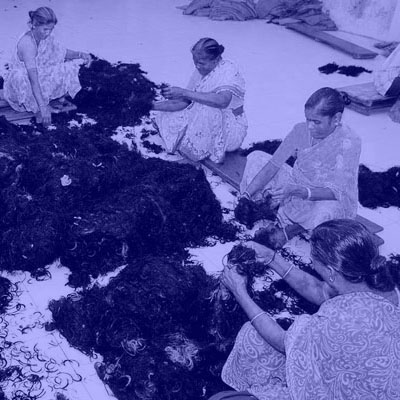
HAIR IN INDIA
Where do hair for fashion wigs and hair extensions come from? The answer is: everywhere, but the majority of them come from China and India, where human hair is a lucrative business. Many temples in South India are reaping millions of dollars in profit from the religious sacrifices made by pilgrims without their knowledge. The hair donors, many of which are poor, never receive a penny in return. Venkateswara Temple situated in the hill town of Tirumala in Andhra Pradesh, India. It is the richest temple in the world in terms of donations received, and one of the most visited places of pilgrimage. On average, the temple receives between 50,000 to 100,000 devotees every day. Tens of thousands of them undergo ritual shaving or tonsuring. Every day between 500 to 600 barbers working in rotation shave over 20,000 heads. Baskets filled with hair are collected every six hours and stored in a vast warehouse where it is piled knee-deep. The hair is then untangled and sorted based on length, grades, and colors. Then it is washed, treated, and dried under the sun. Indian hair is most sought after because the hair is naturally silkier, and most rural women who donate their hair have never used artificial dyes or colors. Some hair has never been cut before. The best quality hair sometimes sells for as much as $800 per kilo. The shorter hair is used to stuff mattresses, create oil filters or extracted amino acids. In earlier times, the hair was thrown away into the river. But today they are sold to vendors in western countries through online auctions that fetch the temple between $3 to $6 million every year.
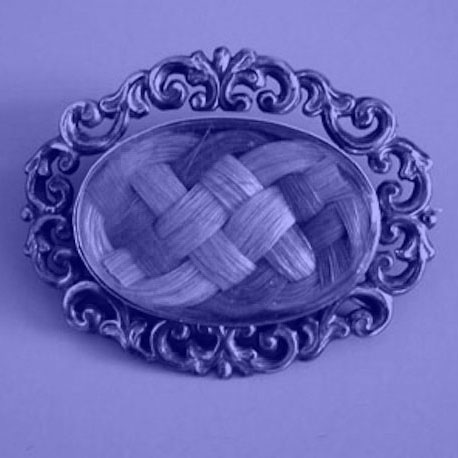
HAIR JEWELRY
Although hair jewelry existed prior to the Victorian era, it was this period that saw it flourish as a trade and private craft in Mourning Jewelry. Hair has chemical qualities that cause it to last for hundreds, possibly thousands, of years makes it a perfect choice for Mourning pieces.

HAIR IN DISASTER
Nylon stockings stuffed with donated hair were used to help soak up some of the oil from the Gulf of Mexico during the Deepwater Horizon oil spill, and now the same strategies are being deployed in Mauritius. Hair and its oil-absorbing capability can be the most ecological way to deal with oil disasters.

NEVER CUT HAIR
Kesh is the most important of all the Sikhism precepts. It’s the practice of never cutting the hair, as a symbol of respect for the perfection of God’s creation. Sikhism is a religion that originated in the Punjab region, the border between India and Pakistan in the 15th century, being today one of the more organized religions, with more than 30 million believers around the world. The hair is tied in a simple knot, held in the nape, and covered with a turban.
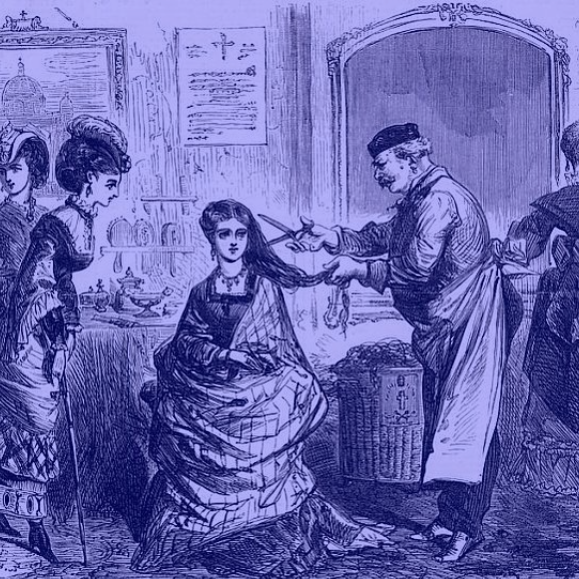
HAIR FOR THE POPE
French country women allow their hair to be cut off, thinking it will be used to make a cloak for the Pope around 1870.

HAIR AND CRUELTY
Prisoners at Auschwitz, as in other German concentration camps, had all the hair on their bodies cut and shaved off during the induction procedures. The SS Economic-Administrative Main Office directed to store prisoners’ hair and sell it to German companies as an industrial raw material.

FAIRY TALE
Rapunzel is a Brothers Grimm fairy tale published in Germany in 1812. It’s based on the story of Charlotte-Rose de Caumont de La Force, Persinette, from 1689. A young couple who want to have a child is living next to the garden of an enchantress, Dame Gothel, who has rapunzel plants growing in her garden. When the woman becomes pregnant, she starts to have strong whims of rapunzel. The husband goes to the garden to grab some plants and he is caught by the witch, who threatens him with punishment. He begs for mercy, and she accepts to forgive him, provided that his first child will be surrendered to her at birth. When the girl was born, she was given to Gothel, who named her Rapunzel and shut her away in a high tower, with neither stairs nor door, one only room, and only one window. At 12 years of age, she hears the witch singing: “Rapunzel, Rapunzel, let down your hair, so that I may climb the golden stair”. Then she drops down the hair to Dame Gothel, so she can climb up the hair to the girl’s room.

HAIR DEALERS
“What surprised me more than all,” wrote Thomas Adolphus Trollope about his visit to a country fair in Brittany, France, in 1840, “were the operations of the dealers in hair. In various parts of the motley crowd there were three or four different purchasers of this commodity, who travel the country for the purpose of attending the fairs, and buying the tresses of the peasant girls . . . I should have thought that female vanity would have eventually prevented such a traffic as this being carried on to any extent. But there seemed to be no difficulty in finding possessors of beautiful heads of hair perfectly willing to sell. We saw several girls sheared one after the other like sheep, and as many more standing ready for the shears, with their caps in their hands, and their long hair combed out and hanging down to their waists.”
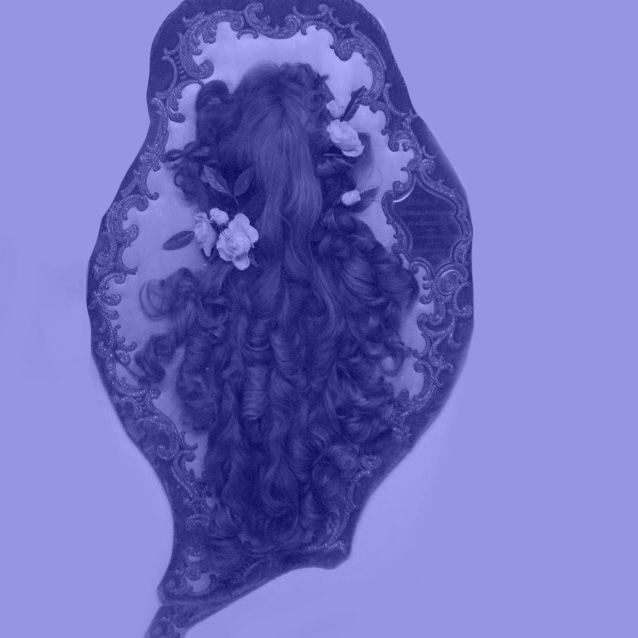
RELIGIOUS OFFERING
Lisieux is a remarkable town because a young woman grew up there, entered a Carmelite monastery near the center of town, and died there in 1897 at the age of twenty-four. Her name was Thérèse Martin, known as Sister Thérèse of the Child Jesus after she became a nun. Twenty-eight years later, Thérèse was canonized and became the most popular saint in the history of Catholicism. In a small museum beside the monastery, Thérèse’s long blonde ringlets, cut off when she received the Carmelite habit, are on display. The hair of the young women entering the monastery, cut as a sign of their renunciation of worldly vanity, was often made into wigs that were worn for plays during recreation.
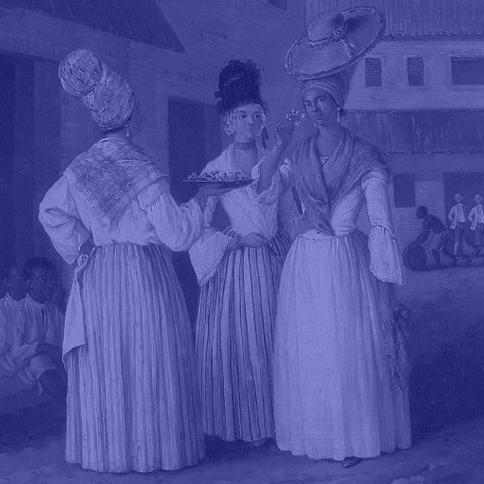
FORBIDDEN HAIR
In the 1700s, black women in Louisiana were known to wear their hair in beautiful, elaborate styles, attracting the attention of white men. In order to diminish “excessive attention to dress” among women of color, Spanish colonial Governor Don Esteban Miró enacted the Tignon Laws, which required Creole women of color to wear a tignon, a scarf, or handkerchief to cover their hair as a way to indicate that they belonged to the slave class — despite the fact that some of these women were “free.”

FASHION AND WIGS
The 18th century is particularly associated with wigs, but these were primarily worn by men in the period. Wigs were introduced in the 17th century, when King Louis XIII of France (1610-43), who had let his own hair grow long, began to bald prematurely at the age of 23. Courtiers were quick to emulate the fashion, which spread to England during the period of the Restoration of Charles II (the 1660s-80s). Over time, specific wig styles began to be associated with various professions, and thus considered de rigeur for men of the middling and upper classes. In 1673, an independent wigmakers’ guild was created in France; by the late 18th century, the number of French master wigmakers had more than quadrupled.

HAIR MAKERS
The Alsatian peasant woman dressed in her finest Sunday best, demonstrating hair net making in Selfridges represents the front stage of the industry. Backstage as many as half a million Chinese women and children were employed making hairnets for the Western market when the fashion was at its height around 1920. But fashions are fickle. With the advent of nylon, the global demand for human hair nets plummeted.

HAIR COLLECTION
With a basket on his back and a hooked stick, the rag and bone man worked at night, hooking tangles of waste hair out of the open drains, Paris, 1892
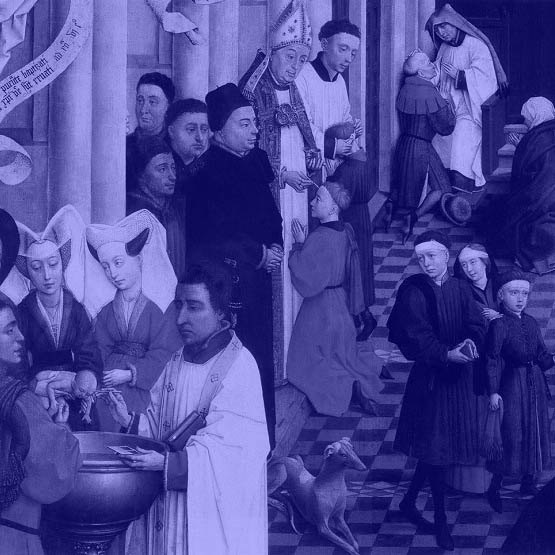
WIG AS A MORTAL SIN
“The woman who wears a wig commits a mortal sin” – saying this, Saint Bernard de Clairvaux confirmed at the XII century the position of the early fathers of the Church. They denounced the wig as an invention of the Evil One. St Jerome, -the author of the Latin Vulgate Bible-, in the 4th century, condemning the hedonistic lifestyle, declared these adornments not tolerated by the Church and unworthy of Christianity. From the first council of Constantinople, wigs receive condemnation as a serious offense to God. Clemens of Alexandria said that who wears a wig at church when receiving a benediction, must keep in mind that the blessing would remain in the wig, and would not pass through to the wearer. People immediately removed their wigs. St Gregory of Nazianzus, as proof of the virtue of his sister Gorgonia, said: “she neither cared to curl her own hair nor to repair her lack of beauty by the aid of a wig”. This point of view would be enforced for several centuries.

HAIR AND SOYA SAUCE
Human hair is rich in protein content, just like soybean, wheat, and bran, the conventional and legally accepted raw ingredients for the production of soy sauce. In Hubei province, a factory is processing over ten tons of human hair daily into edible amino acids suitable for turning into soy sauce. Rich in proteins and amino acids human hair was until recently widely used to make food ingredient L-cysteine worldwide.

HAIR RECYCLING
Nairobi, Kenya – In one of Africa’s largest dumps, some residents are making a living by collecting and recycling hair from mountains of rubbish. An estimated 6,000 people making their living by scavenging in the rubbish. Some people raise pigs on organic waste, while others find items to sell. Buying hair extensions collected by young boys in the dump and then selling them to beauty salons for a small profit. “You can get lucky and find unused human hair. Maybe someone bought it and wasn’t satisfied with it, maybe the color, then they threw it away.” Of the different types of hair extensions, a human hair is the most coveted for its softness and versatility. The rising demand in Africa and elsewhere has countries such as India, China, and Brazil competing for the biggest share of the market. Much of the recycled hair is sold to hairdressers in Korogocho, a slum across the river from the dump. Dozens of women have set up makeshift hair salons in the local market.

HAIR AS FERTILIZER
Human hair is one of the highest nitrogen-containing organic materials in nature because it is predominantly made up of proteins. In addition, human hair also contains sulfur, carbon, and 20 other elements essential for plants. In the atmosphere, hair decomposes very slowly, but moisture and keratinolytic fungi present in the soil, animal manure, and sewage sludge can degrade hair within a few months. In traditional Chinese agriculture, human hair was mixed with cattle dung to prepare compost that was applied to the fields in the winter season. In some communities in India, hair has been used directly as fertilizer for many fruit and vegetable crops and in making organic manures. Recent experiments on horticulture plants show that direct application of human hair to soil provides the necessary plant nutrients for over two to three cropping seasons.
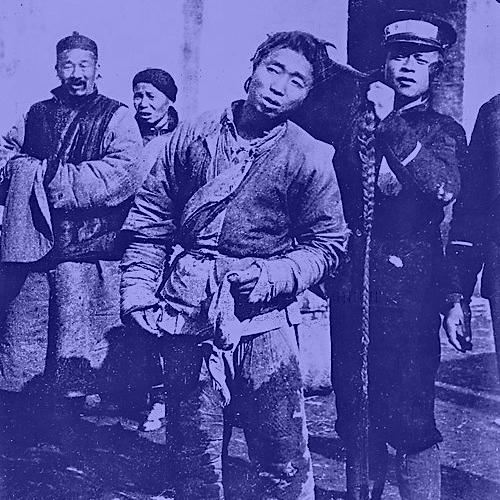
FORBIDDEN HAIR
When men were forbidden from wearing long plaits also known as ‘pig tails’ or ‘queues’ in China after the 1911 revolution, this boosted supplies of hair for European fashions but when the United States introduced a ban on imports of hair from communist countries in the 1960s, hair traders turned from China to India in search of supplies.

HAIR WARDROBE
Khloé Kardashian has an entire wardrobe dedicated to her hair extensions. She is known for being a hair chameleon and regularly switches up her look from a sleek blonde bob to long waves and everything in between. And now fans have been given a glimpse at where Khloé keeps her vast array of wigs and hairpieces. The celebrity has so many different hairpieces she has an entire wardrobe dedicated to her collection, where they are all clipped onto hangers and displayed via color.

CALLIGRAPHY BRUSHES
The tradition of making baby hair brushes originated in Northern China and each brush symbolizes the everlasting bond between parents and their children. They also represent parents’ wishes for their children to become wise, level-headed, and studious individuals, as well as their expectations of filial piety. The brushes are made from the hair of infants aged 3 years and under. Only the first growth of hair is used because that’s the only time when human hair tapers naturally at the tip. In Hong Kong, there are a few remaining practitioners of this rare craft.

HAIR AND BREAD
An important food additive used in commercial bread production is often made from human hair. The amino acid L-cysteine is often made from grain but cheaper production methods include duck feathers and human hair gleaned from hairdressing salons. When used as a food additive, L-cysteine has the E number E920. It is against EU law to use any form of human remains in the food.
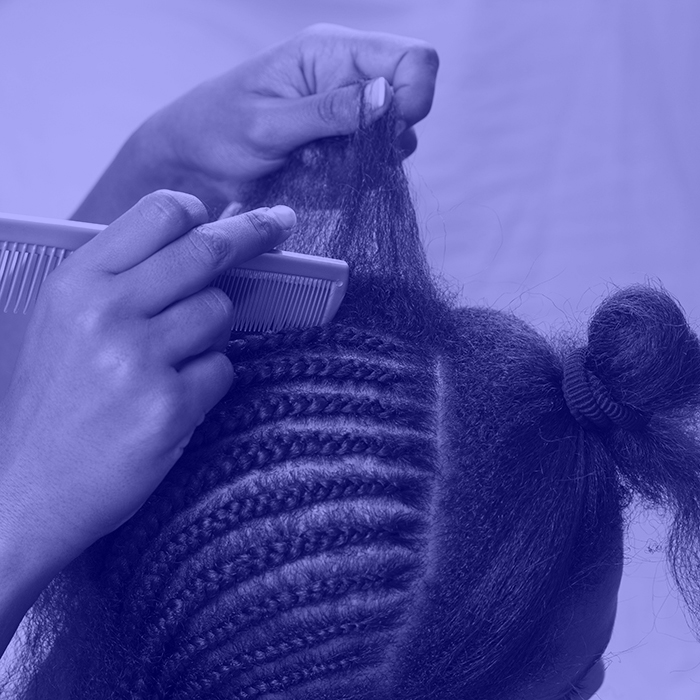
HAIR AND LAW
On July 3, 2019, California became the first state to legally protect the hair of black students and employees when Governor Gavin Newsom signed Senate Bill 188, also referred to as the CROWN Act (Create a Respectful and Open Workplace for Natural Hair), a law that declares hair discrimination to be illegal. The new California law reads, “The history of our nation is riddled with laws and societal norms that equated ‘blackness,’ and the associated physical traits, for example, dark skin, kinky and curly hair to a badge of inferiority, sometimes subject to separate and unequal treatment.” The bill goes on to say, “Professionalism was, and still is, closely linked to European features and mannerisms, which entails that those who do not naturally fall into Eurocentric norms must alter their appearances, sometimes drastically and permanently, in order to be deemed professional.”

HAIR AND CLIMATE CHANGE
Fashion designer Dame Vivienne Westwood unveiled a new extreme shaved hairdo as a protest against climate change IN 2015. At a demonstration in her local borough of Clapham, the 72-year-old showed off her newly shaven haircut, with just a few grey hairs on show. A spokesperson for her fashion label said: “Vivienne cut her hair as we must all wake up to climate change. And secondly, she wanted to cut the red out for a while and have it white- to show she’s proud of her age.”
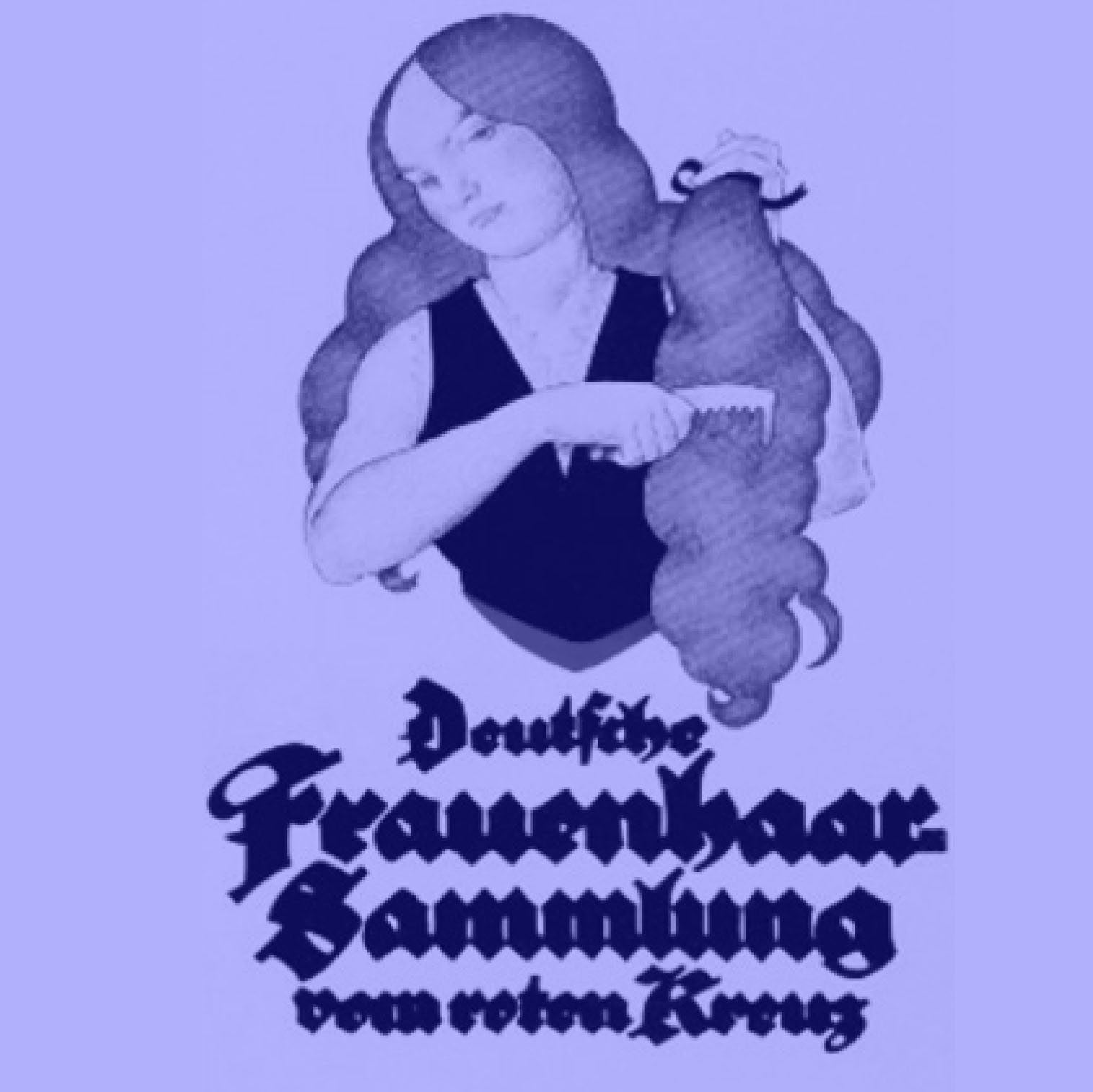
HAIR IN WAR
Blockaded and cut off from overseas supplies, Germany mobilized effectively to find substitutes at home. This poster calls on German women – Especially young women with long flowing tresses – to donate their hair, which was used to make rope. Children were organized by their teachers into garbage brigades to collect every scrap of useful material.
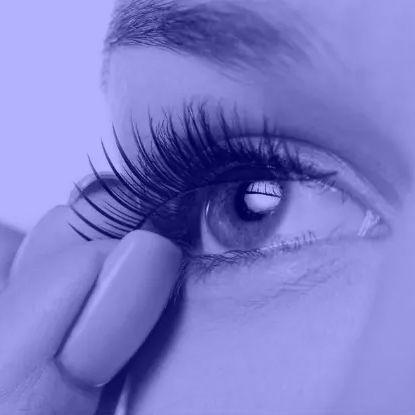
FALSE EYELASHES
At its core, the obsession with longer lashes stems from the idea that lashes get shorter with age. In ancient Rome, it was especially important for women to keep their eyelashes long to prove their chastity. With lashes worn by some of the world’s most famous people, they eased into the mainstream. Fake eyelashes are now sold anywhere makeup is. Putting on fake eyelashes is an entirely mainstream beauty ritual now. Both 100% human hair eyelashes and minks are popular among false eyelashes and eyelash extension wearers. Most notably, this is due to the incredibly natural look afforded by both types. Natural human eyelashes are just like any other hair found on the human body. The majority of human hair used to make eyelash extensions come from India, China, and Indonesia. Human hair eyelashes, for the most part, are hand-assembled from scratch with durability in every lash.
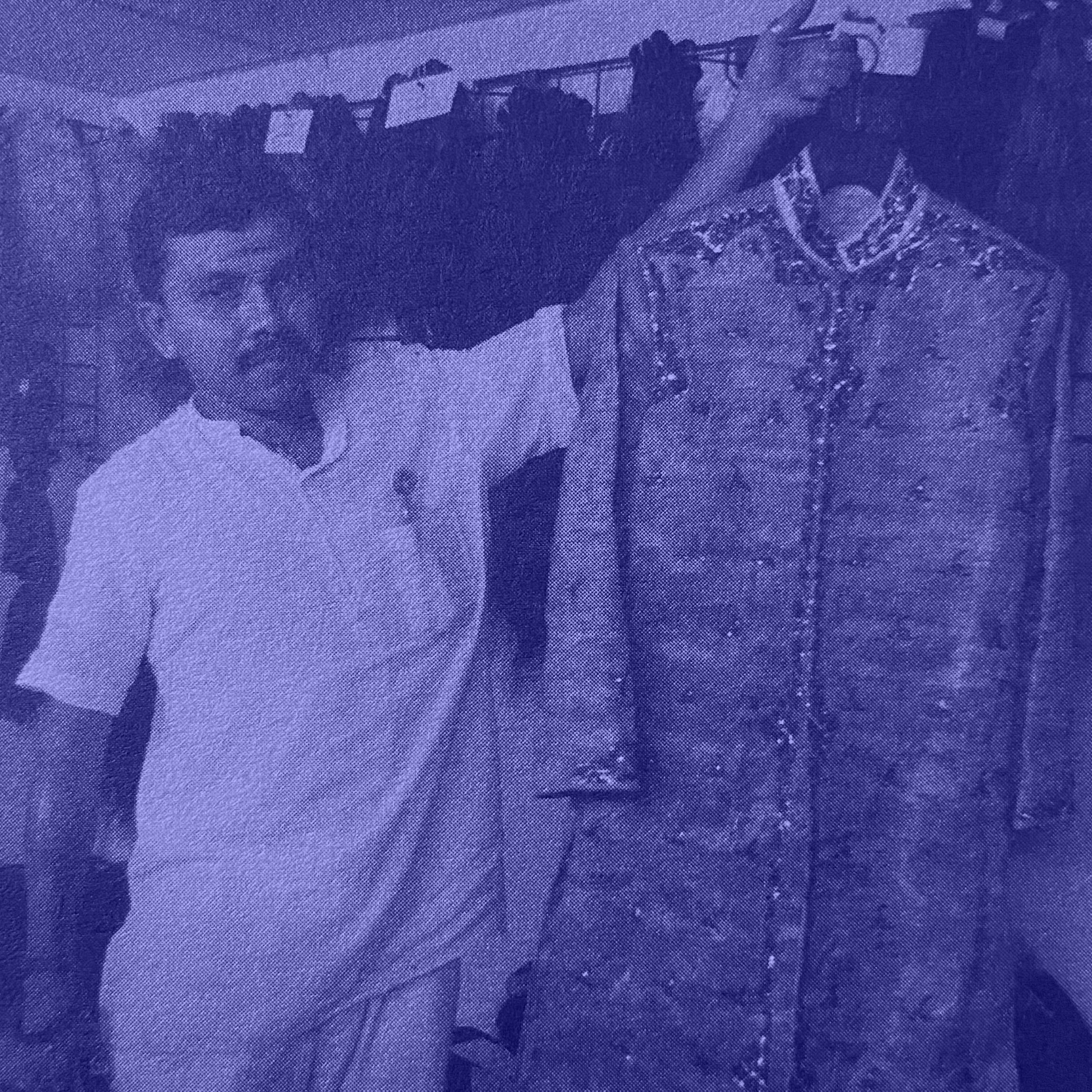
WEDDING GOWN
Mr. A. L. Kishore Kumar is a third-generation Indian hair trader. In his office on the wall is a photograph of himself seated on a huge golden wedding throne, in it, he is wearing a gown and scarf woven from human hair. The wedding gown, a tailored ackhan, is made from Indian temple hair that has been bleached and dyed to a pale goldish blond. The hair, which forms a loose weft, looks almost like raw untwisted silk floss and the whole garment is edged and decorated with red and gold sequins. “What was God’s gift to us to protect the human body? – Human skin and human hair! Human-hair cloth offers good protection from heat and cold and you don’t get any side effects. Why do people wear animal hair when they could be wearing human hair?” – A.L. Kishore Kumar
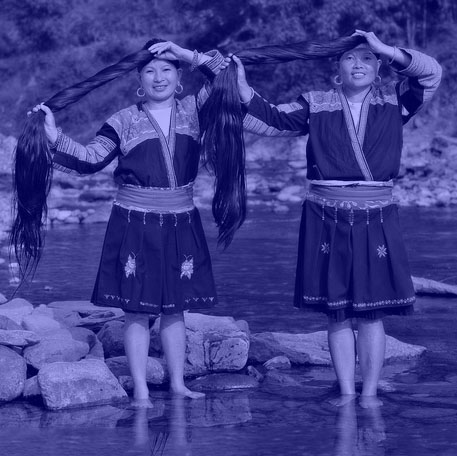
CUT AT ONCE
A thousand miles from Beijing, the village of Huang Luo in China’s Guangxi Region is famous for the dramatically long hair worn by its female residents. As legend has it, thousands of years ago a girl from the local Yao tribe literally whipped an unwelcome suitor with her hair, and to this day many of the Yao women cut their hair only once in their lives: When they are 18 it is shorn in a public ceremony. After that, the locks are left to grow to exuberant lengths, with the cutoff hair woven back into an elaborate coiffure. Unmarried women tuck their hair into a headscarf; married women favor a wrapped-up style with a large bun at the front.
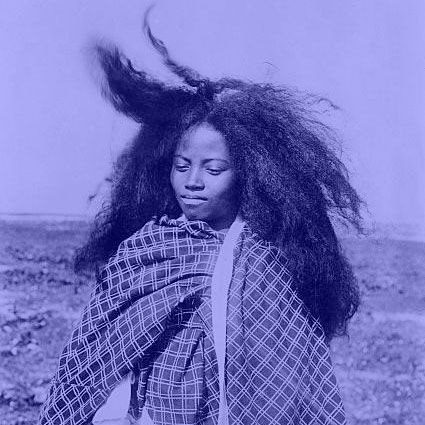
MOURNING HAIR
Some Madagascan widows are forbidden from washing or tending to their hair for 12 months following their husband’s death, as a sign of self-mortification and to make them repulsive to other men.
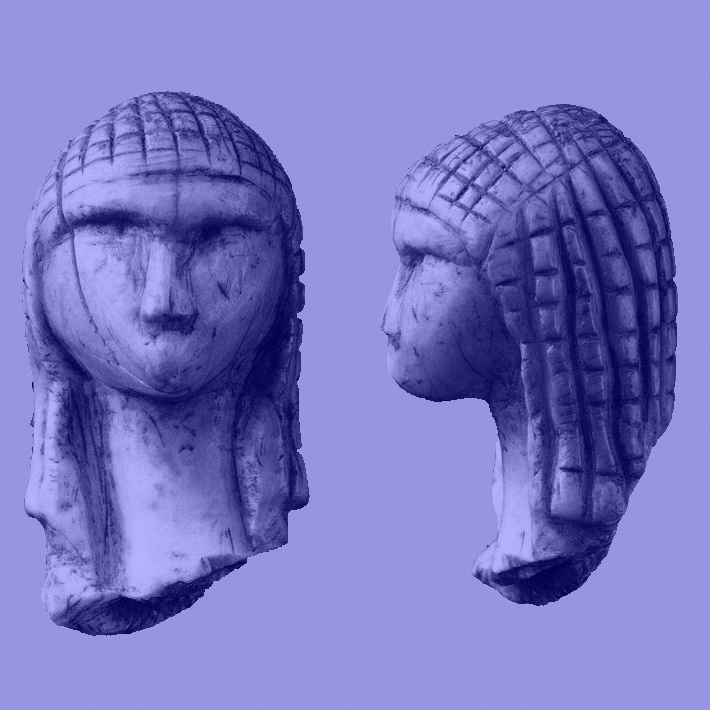
VENUS OF BRASSEMPOUY
The Venus of Brassempouy, which dates back to 23,000 BC, is one of the earliest known realistic representations of a human hairstyle. The Venus of Brassempouy – the surviving head and neck of the original figure – was sculpted from mammoth ivory. The carving is roughly 3.5 cm in height, 2.2 cm deep, and 1.9 cm wide. Unlike the other venuses found at Brassempouy and elsewhere, this particular one contains clear facial features of forehead, brows, eyes, nose but no mouth. The top and sides are incised with a representation of braided hair or an Egyptian-style headdress.

ROYAL LONG HAIR
By far the most famous for their coiffure is the Merovingian kings of Gaul (modern France), known as the ‘long-haired kings’ (reges criniti) in medieval sources. The practice of the Frankish kings never to have their hair cut. Custom has reserved this practice for royalty as a sort of distinctive badge and prerogative. Rival claimants to the throne were often tonsured and sent into a monastery. The act of tonsure was apparently so humiliating that the rival lost his royal aura ̶̶ At least until his hair grew back. When queen Chrodegildis was forced to choose between having her grandsons tonsured or killed, she preferred the boys dead rather than shorn. Finally, the last Merovingian king was deposed and then tonsured by the short-haired Carolingians who replaced him.
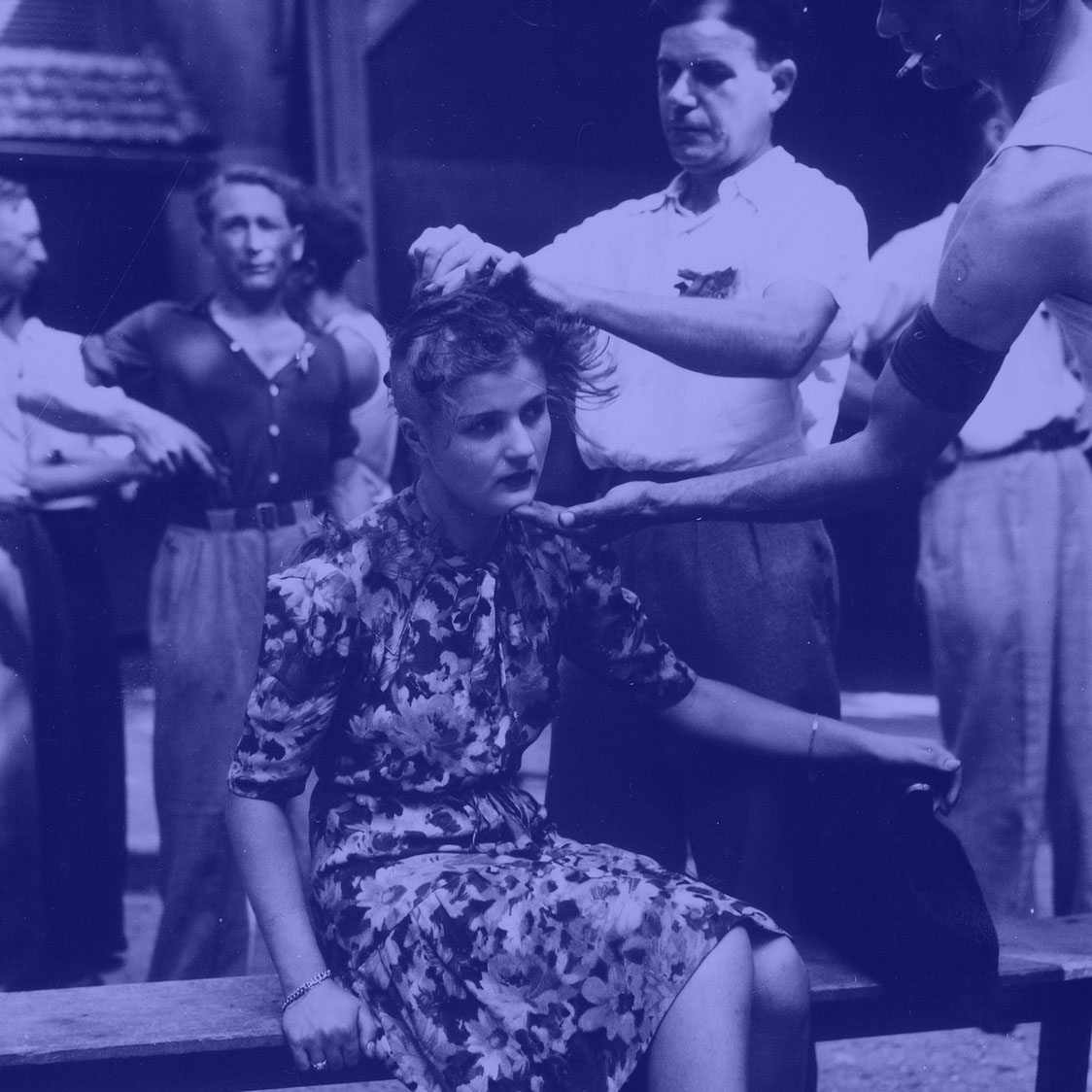
UGLY CARNIVAL
French women who, accused of having intimate relations with German troops during the WWII Nazi occupation of France, had their heads shaved and were paraded in front of a jeering mob. These women weren’t injured – hair grows back. And yet this is truly an act of torture and humiliation. It is extreme evidence of the fact that hair is one of the seats of human dignity.
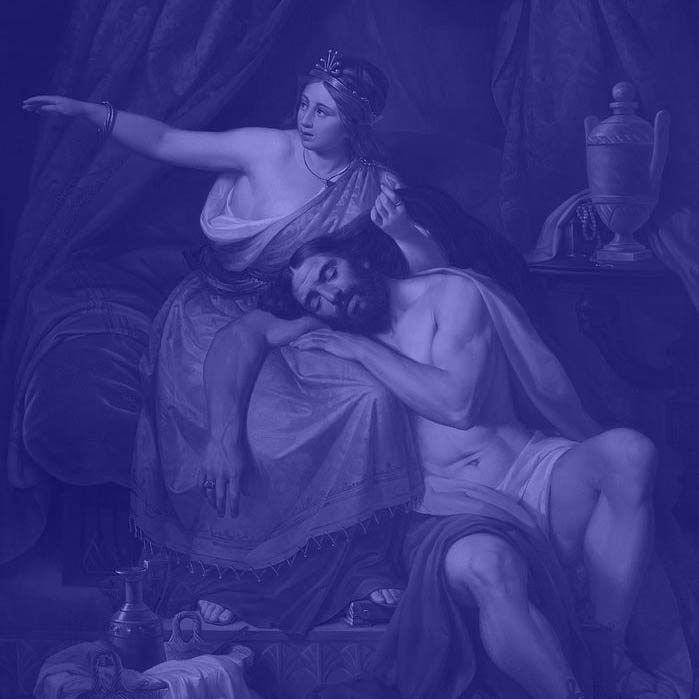
POWER OF HAIR
The story of Samson comes to us from the Book of Judges in the Old Testament of the Bible and from the Tanakh. An angel came to Samson’s parents and told them that Samson would have superhuman strength – but this strength would last provided his hair was never cut. And so, Samson’s hair was never cut and he grew up to be an extremely strong man. Samson was betrayed by his lover Delilah, who, sent by the Philistines officials to entice him, ordered a servant to cut his hair while he was sleeping and turned him over to his Philistine enemies.

MORE HAIR MORE THOUGHTS
The Navajo, Native American tribe populates the states of Utah, Colorado, New Mexico, and Arizona. They arrived in America across the Bering Strait, crossing through Canada, thousands of years ago, and they still keep rites, traditions, and very ancient beliefs. For them, the hair has a profound significance: they believe that thoughts originated in the head emerge along with the hair, and they are into it; new thoughts are close to the scalp and the old ones at the end of the longest strands. The longer the hairs are, the more thoughts they have.
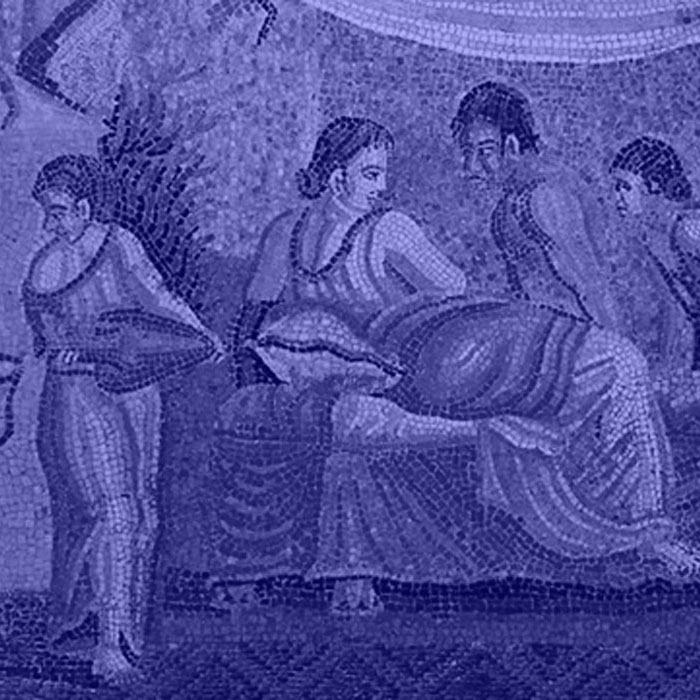
HAIR DYEING
At the time of the Roman Empire, one of the most popular ways for people to ornament themselves was through hair dyes. The many traders and slaves that came to Rome and other Roman cities as a result of the empire’s great expansion exposed the Romans to a wide variety of hair colors. The most popular hair coloring in ancient Rome was blond, which was associated with the exotic and foreign appearance of people from Gaul, present-day France, and Germany. Roman prostitutes were required by law to dye their hair blond in order to set themselves apart, but many Roman women and men followed suit. The other most popular hair colors were red and black. The most striking hair coloring effects of all could only be afforded by the very wealthiest Romans; some of them powdered their hair with gold dust. The emperor Commodus, was especially famous for powdering his snow-white hair with gold.

HUMAN HAIR EMBROIDERIES
Human hair embroideries is a very special Chinese tradition, coming from the Tang Dynasty, in the 7th century. It is a special needle-work of making patterns on silk with human hair as the thread. As Chinese hair is mostly black, that’s the monochromatic color predominating in these works, although sometimes they use to dye the hair to give a variation to the embroidery. This kind of work is considered in China a valuable gift and an excellent piece of collection.
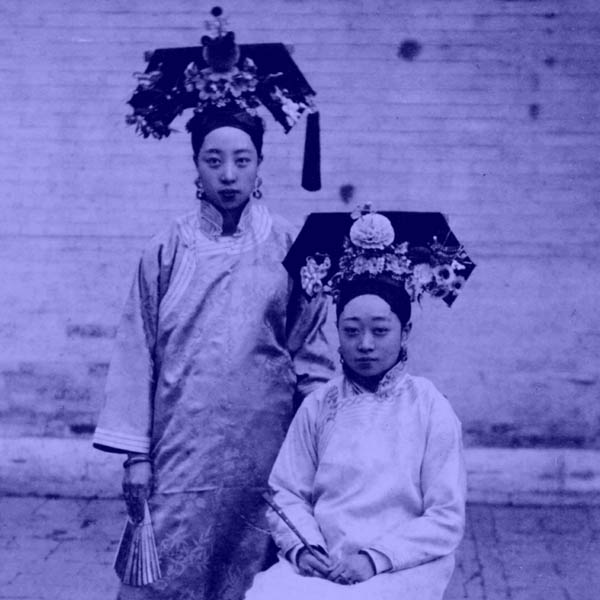
MANCHU WOMEN
Ancient Chinese styles of hair ornaments are from the earliest times one of the most beautiful in the world. The Chinese culture has given increasing importance to the arrangement of hair along with its history and a strong symbolic meaning, the form of use or haircuts or hairstyles always marked social or civil status, religion, or profession. No haircare arrangement for them is a sign of disease or depression. As China is a conglomeration of peoples and ethnic groups, there are so many styles and regional customs. Manchu women are renowned as “women with golden heads and heavenly feet”. The way they dress and gear their heads is considered one of the most beautiful and elegant in the entire world. The Manchu minority ruled from the 17th century to the 20th century in China. Girls use a single pigtail hanging behind, sometimes with gold or silver jewelry fastened on the tip. Manchu women use fresh flowers, usually pressed with a hairpin made of gold, silver, or emerald.
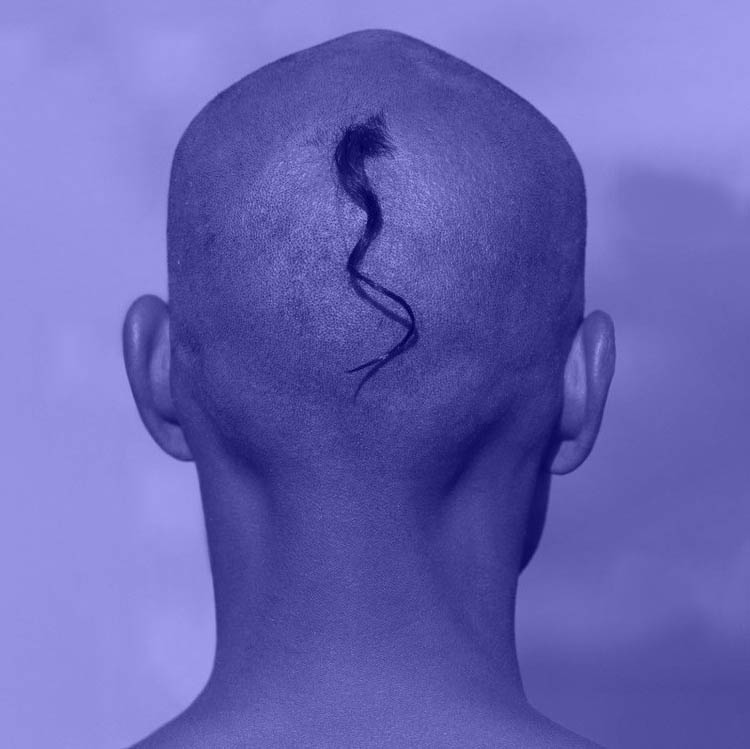
SIKHA
With the arrival of the Aryans, in the 15th century BC, the Indus Valley civilization comes to the end and starts the Vedic Period, when the first sacred texts written in Sanskrit appear. It’s into this period when the caste system is installed. Costumes change, and also the ways of grooming the hair, even by the difference between castes. The Vedas prescribed that every Indian should use the hair cut in the form of sikha, which is equivalent to shaving the whole head, leaving a lock of hair at the back or at the side. The sacred texts say that “Sikha allows God to pull people to Heaven “… Over time, this kind of haircut will be worn only by the Brahmins, the priests’ caste. The rest of the people will use long hair, and upper-caste women will use ornaments with jewels and gemstones on the forehead.

ANCIENT EGYPT
Egyptians used their hair in different ways: they could have, -men and women- clean shaven heads, or to use the hair shoulder-length, or cut short up to the nape. Hairstyles for them did not determine the gender. However, it could be a sign of age or the social group. Children were generally shaved off until puberty, and after that age, they could decide whether to use short or long hair. Old people used wigs to hide their baldness or their white hair. Workmen wore their hair cut short, usually with a bang. Between the most powerful social classes, it was frequent to use wigs and elaborate extensions, with the assistance of personal hairdressers and wig makers.

CHUDAKARANA
It’s the ceremony in which the babies’ hair is almost totally removed, leaving a tuft in the crown of the head, when they are three years old. It’s a sacred precept of Hinduism, a Samskāram, one of the 16 sacred rites of Vedas. Its signification is that the baby’s hair is dragging undesirable traits from former lives and must be removed for it may grow clean and purified. It’s also considered the freedom of the total dependence of his mother, and the beginning of a new age in which the baby starts to feed by himself. Father, mother and son take a sit around the fireplace and while the baby’s head is shaved, the father prays mantras, offering the shorn hair to the Gods. This rite has more than 4,000 years of practice and is absolutely respected in India still today. The ways to make the rite and the ceremony have several variations according to different regions and costumes.

HAIR AND EVOLUTION
Aside from horses, humans are pretty much the only species that has a huge concentration of hair in one particular spot. Why the patterns of hair growth in Homo sapiens differ so dramatically from our close relatives, like chimpanzees. Losing body hair meant we could sweat more, a cooling mechanism that helped to make possible the dramatic enlargement of our most temperature-sensitive organ, the brain. Other hypotheses that the hair remaining on human heads helped hominins regulate body temperature when they became bipedal and started traveling long distances. Basically, scalp hair created a kind of built-in hat.
Both head hair and body fur grow in cycles. The hair follicle produces a strand of hair during its active growth phase, called anagen. Then the growth slows, and the follicle “rests” for a while, the telogen phase. Then comes exogen when the hair falls out, and the follicle begins growing a new strand of hair as the anagen phase begins again. Hair on the head keeps growing for two to six years. The possibility to identify the factors that make head hair grow differently than body hair, scientists may never know why humans evolved head hair that’s so different from our closest animal cousins. Scientists speculate the difference in our hair types has to do with sexual selection. How continuously growing hair plays into sexual selection is an unanswered evolutionary question for now.

MOST ANCIENT BODY
Ginger, the most ancient naturally mummified body known until the present day in Egypt, was blond, with wavy hair and white-yellowish skin. He was found at the cemetery of Gebelein, in South Thebes, in 1900 and it was established that the body is 3,500 years before the Christian Age-old, meaning, a 5,500 years old mummy, from the Late Pre-Dynastic period age. His nickname is due to the color and curls of his hair, which is pretty well conserved. He probably was a member of the Naqada Culture’s people, which lived before the first pharaohs, and which inhabitants, as all of the Pre-Dynastic period, were of Caucasoid appearance, with dark, reddish or clear brown hair, or blonds, and some of them red-heads; most of them of straight or wavy hair.

QUEUE ORDER
Before the Qing Dynasty (1644-1911), men used to comb their hair backward and shave their foreheads. It was the costume of the Han ethnic group, who was –and still they are- 98% of the Chinese population. The Qing Dynasty, in the 17th century, from Manchu origin, (Manchuria represents an ethnic minority) after they overthrew the Ming Dynasty, imposed as mandatory their own hairstyle, under penalty of execution as treason to those who did not obey the order. The hairstyle consisted of the hair on the front of the head being shaved off above the temples and the rest of the hair braided into a long ponytail or queue. This law was the reason for blooding rebellions and internal fights because it was strongly resisted by the whole population. The intention of the order was to publicly demonstrate submission to the Qing Emperor. As the Manchu Dynasty lasted for 3 centuries, the hairstyle was imposed along with the entire kingdom. Finally, in 1922, the last emperor trimmed his queue as a symbol of changing habits.

WOMEN’S HAIR HUSBAND’S PROPERTY
During the first period of the Medieval era, ranging from the fifth to the eleventh century, women usually had long hair, extended to knee length or sometimes, below, and also with two long braids at the sides of the head or tied in a chignon. Along almost all the Middle Ages period, women arranged their hair to reveal their complete foreheads; often they shaved the hair around the hairline to give an appearance of a higher line. The forehead was at that time considered a very important feature of the face. They used to cover it with artificial flowers, headbands, or precious jewelry, but never with hair. Women’s hair was considered itself, at this period, an erotic feature. In consequence, married women had to cover it with veils. The married woman’s hair was legally considered as the property of the husband. Near the end of the Middle Ages, the Catholic Church issued religious decrees that veils were obligatory for all women. One of the most popular hairstyles from the Middle period until the Late period was to secure the braids in chignons at either side of the head, above each ear, held by golden or silk threads. Another popular style in the 13th and 14th centuries was to make three or four braids and to tie them at the back of the head with fine nettings with ornaments. At the beginning of the period, women used their hair naturally, but since the Middle period and up to the end, the public exhibition of the hair was considered unseemly and disrespectful. They also wore high hats and bonnets to attend Church or in public places.

HAIR AND INSTRUMENTS
The Mangyans live on an island in the Philippines called Mindoro. Their folk music tradition birthed the git-git, a bowed instrument strung with human hair. It compares to the violin in both function and looks. The git-git was only used by young men when there went courting.
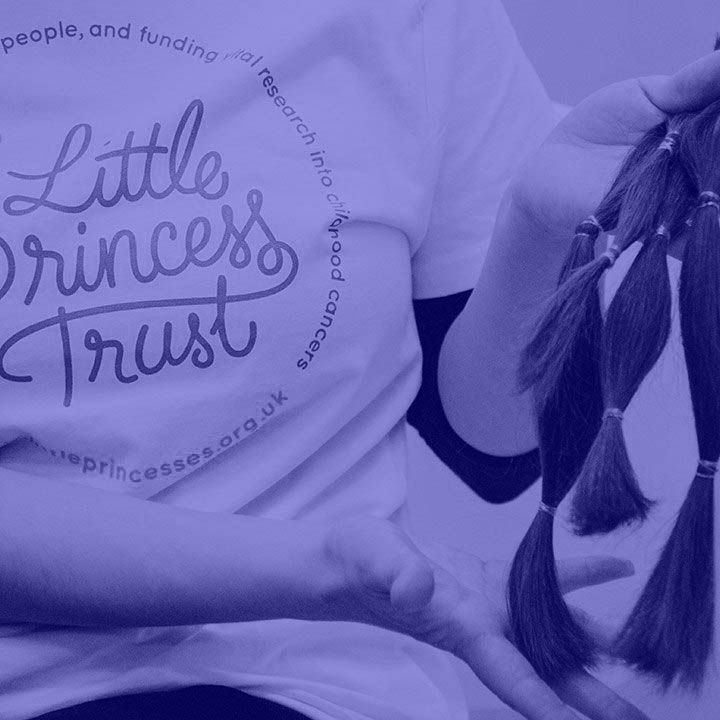
LITTLE PRINCESS TRUST
The Little Princess Trust provides free real hair wigs to children and young people, up to 24 years, who have lost their own hair through cancer treatment or other conditions. They use hair donations and fundraising monies sent to them by their amazing supporters, to manufacture and fit their beautiful real hair wigs. Established in 2006, they have supplied over 8000 wigs to children and young people and have invested circa £5 million into ground-breaking childhood cancer research.
The minimum length of hair that they can accept is 7inches/17cm. However, they do currently have sufficient stock of hair measuring between 7 and 11 inches, and that is why they encourage all their supporters to donate hair that measures 12 inches and above. Frequent donations of the shorter lengths could bring storage costs to the charity and they, understandably, would prefer to use their resources to provide wigs to children and fund vital research into childhood cancers.
You can find more information at littleprincesses.org.uk

HAIR AND INFORMATION
The only “living” part of a hair is found in the follicle as it grows. The hair strand above the skin has no biochemical activity and so is considered “dead”.
Hair contains information about everything that has been in somebody’s bloodstream, such as medicine, drugs, minerals, and vitamins. Alone, without follicle cells attached, it cannot be used to identify a specific individual. In the best case, an investigator can identify a group or class of people who share similar traits who might share a certain type of hair. Gender also cannot be identified from hair. Men’s hair and women’s hair are identical in structure.
DNA is contained in blood, semen, skin cells, tissue, organs, muscle, brain cells, bone, teeth, hair, saliva, mucus, perspiration, fingernails, urine, feces, etc. DNA can be collected from virtually anywhere. Shed hair has no nuclear DNA. Nuclear DNA comes from the cell nucleus and is inherited from both parents, half from the mother and half from the father. Each person’s nuclear DNA is unique — except for identical twins, who have the same DNA. The hair follicle at the base of human hair contains cellular material rich in DNA. In order to be used for DNA analysis, the hair must have been pulled from the body – hairs that have been broken off or cut off do not contain Nuclear DNA. Therefore hair that has been cut off by a barber or hairdresser does not contain any Nuclear DNA.

SUPPORT OF 5400 KG
Each strand of hair can support up to 100 grams in weight. Multiply that by the average 100,000 to 150,000 strands on each head, and your entire head of hair could support the weight equivalent to two elephants or about 5,400 kilos.

SECOND FASTEST GROWING TISSUE
Hair is the second-fastest-growing tissue in the human body. The only thing that grows faster is bone marrow. On average, hair tends to grow between 0.5 and 1.7 centimeters per month. Everyone’s hair is different, and lots of factors can influence how quickly it grows. A person’s genes will dictate how quickly their hair will grow. Male hair grows faster than female hair. Hair grows fastest between the ages of 15 and 30, before slowing down. Some follicles stop working altogether as people get older. This is why some people get thinner hair or go bald. Good nutrition is essential for the growth and maintenance of healthy hair.

QUECHUA MARITAL STATUS
The Quechua are a group of indigenous people scattered throughout areas of South America. One of the most significant aspects of the Quechua woman’s look and culture is her hair. Throughout Peru, native women of all ages wear long braids. Long, braided hair represents much more than just a hairstyle to the Quechua; the braids signify the marital status of Peruvian women. Two braids reveal that a woman in the tribe is married, while one or many braids mean that she is single.

SUMO WRESTLER
Japanese culture is full of incredibly codified rituals involving hair, where the observance of traditional rites is as important as the styles themselves. The chonmage is a form of Japanese traditional topknot haircut worn by men. It is most commonly associated with the Edo period and samurai, and in recent times with sumo wrestlers. It was originally a method of using hair to hold a samurai helmet steady atop the head in battle and became a status symbol among Japanese society. When an honored sumo wrestler reaches retirement, his top knot or ‘chonmage’ is chopped off piece by piece by former trainers and opponents. The chonmage is of such symbolic importance in sumo that snipping it off is the centerpiece of a wrestler’s retirement ceremony. Dignitaries and other important people in a wrestler’s life are invited to take one snip, with the final one taken by his trainer. For most wrestlers who never reached a sekitori rank, his retirement ceremony will be the only time he wears the more elaborate ōichōmage.

ZULU BRIDE
Zulu people are an Nguni ethnic group in Southern Africa. The Zulu people are the largest ethnic group and nation in South Africa with an estimated 10–12 million people living mainly in the province of KwaZulu-Natal. A Zulu bride wears a flaring red headdress reminiscent of the hairstyle of her ancestors. This traditional headdress was originally made from her mother’s hair and received as a gift on the day of her marriage.

TRAVELLERS HAIR
In many cultures, men travelling abroad have been in the habit of leaving their hair unshorn until their return. The reason for this custom is probably the danger to which, as we have seen, a traveller is believed to be exposed to the magic arts of the strangers amongst whom he sojourns; if they got possession of his shorn hair, they might work his destruction through it. The Egyptians on a journey kept their hair uncut till they returned home. At Tâif when a man returned from a journey his first duty was to visit the Rabba and poll his hair.

CERAM MEN
In Ceram men do not crop their hair: if married men did so, they would lose their wives; if young men did so, they would grow weak and enervated. Seram, formerly spelled Ceram; is the largest and main island of Maluku province of Indonesia.

ACHILLES UNSHORN HAIR
Achilles kept unshorn his yellow hair, because his father had vowed to offer it to the River Sperchius if ever his son came home from the wars beyond the sea. In Greek mythology, Achilles was a hero of the Trojan War, the greatest of all the Greek warriors, and is the central character of Homer’s Iliad. He was the son of Nereid Thetis and Peleus, king of Phthia.

POLYNESIAN POWER CUT
For young Polynesian boys, they have to wait until they are a teenager to receive their first cut, by which time they have grown rather attached to their beautiful long locks. Nevertheless, this is an important Polynesian custom that represents the boys coming of age process, where he is to embrace his new masculine identity and become a man. Traditionally, this ritual has spiritual symbolism for Polynesians, despite the dispute over its origins. Some believe that the customary teenage haircut derived from missionary influence, whereby the local people would be encouraged to cut their children’s hair short. However, there is a lot of dispute over this claim, saying that these traditions and rituals predate any missionary on the Islands.

HAIR TO ROPE
Higashi Hongan-ji’s original temple complex was burned down a number of times. Its main temple in Kyoto was last rebuilt in 1895. The temple complex of today is one of the world’s largest wooden structures. The construction of the temple’s two main halls required the hoisting and moving massive wooden beams, but unfortunately, obtaining rope strong enough for the job was nearly impossible at the time. The female devotees of the temple got together to help out. Cutting off their long hair, they took the long locks and braided them together to make a strong, thick, gross rope that was able to hoist the heavy beams.

HAIR DONATION
Any world-famous rock star can write a check in support of a pet charity project. John Lennon and Yoko Ono made a very different sort of donation on Feb. 4, 1970. The duo had recently made the acquaintance of London-based activist Michael X, who’d reached out to them after they made headlines for paying fines incurred by anti-apartheid activists who’d interrupted a rugby match between Scotland and South Africa. Inspired by the gesture, X asked John and Yoko to support the Black House, a home for disadvantaged youth in London, and they agreed. But instead of offering money, the Lennons hatched a plan for the latest in a series of publicity stunts. Having recently cut off their hair, they offered to exchange it for a pair of Muhammad Ali’s boxing shorts – an odd celebrity bartering program that was supposed to benefit a pair of projects, with the hair being auctioned off to support the Black House and the shorts being sold to raise money for John and Yoko’s peace campaign. The haircut took place in Denmark on Jan. 20, 1970, and John and Yoko met up with X on the Black Center’s rooftop on Feb. 4, where they held a press conference to announce their plans and posed for photos with the hair.

CORNROWS
Cornrows were used to help slaves escape slavery. In the time of slavery in Colombia, hair braiding was used to relay messages. For example, to signal that they wanted to escape, women would braid a hairstyle called departes. It had thick, tight braids, braided closely to the scalp, and was tied into buns on the top. Another style had curved braids, tightly braided on their heads. The curved braids would represent the roads they would use to escape. In the braids, they also kept gold and hid seeds which, in the long run, helped them survive after they escaped. They would also use seeds as decoration in the hair, but would later plant the seeds and grow their own crop. It is more than just a simple hairstyle.

HAIR IN INDIA
Where do hair for fashion wigs and hair extensions come from? The answer is: everywhere, but the majority of them come from China and India, where human hair is a lucrative business. Many temples in South India are reaping millions of dollars in profit from the religious sacrifices made by pilgrims without their knowledge. The hair donors, many of which are poor, never receive a penny in return. Venkateswara Temple situated in the hill town of Tirumala in Andhra Pradesh, India. It is the richest temple in the world in terms of donations received, and one of the most visited places of pilgrimage. On average, the temple receives between 50,000 to 100,000 devotees every day. Tens of thousands of them undergo ritual shaving or tonsuring. Every day between 500 to 600 barbers working in rotation shave over 20,000 heads. Baskets filled with hair are collected every six hours and stored in a vast warehouse where it is piled knee-deep. The hair is then untangled and sorted based on length, grades, and colors. Then it is washed, treated, and dried under the sun. Indian hair is most sought after because the hair is naturally silkier, and most rural women who donate their hair have never used artificial dyes or colors. Some hair has never been cut before. The best quality hair sometimes sells for as much as $800 per kilo. The shorter hair is used to stuff mattresses, create oil filters or extracted amino acids. In earlier times, the hair was thrown away into the river. But today they are sold to vendors in western countries through online auctions that fetch the temple between $3 to $6 million every year.

HAIR JEWELRY
Although hair jewelry existed prior to the Victorian era, it was this period that saw it flourish as a trade and private craft in Mourning Jewelry. Hair has chemical qualities that cause it to last for hundreds, possibly thousands, of years makes it a perfect choice for Mourning pieces.

HAIR IN DISASTER
Nylon stockings stuffed with donated hair were used to help soak up some of the oil from the Gulf of Mexico during the Deepwater Horizon oil spill, and now the same strategies are being deployed in Mauritius. Hair and its oil-absorbing capability can be the most ecological way to deal with oil disasters.

NEVER CUT HAIR
Kesh is the most important of all the Sikhism precepts. It’s the practice of never cutting the hair, as a symbol of respect for the perfection of God’s creation. Sikhism is a religion that originated in the Punjab region, the border between India and Pakistan in the 15th century, being today one of the more organized religions, with more than 30 million believers around the world. The hair is tied in a simple knot, held in the nape, and covered with a turban.

HAIR FOR THE POPE
French country women allow their hair to be cut off, thinking it will be used to make a cloak for the Pope around 1870.

HAIR AND CRUELTY
Prisoners at Auschwitz, as in other German concentration camps, had all the hair on their bodies cut and shaved off during the induction procedures. The SS Economic-Administrative Main Office directed to store prisoners’ hair and sell it to German companies as an industrial raw material.

FAIRY TALE
Rapunzel is a Brothers Grimm fairy tale published in Germany in 1812. It’s based on the story of Charlotte-Rose de Caumont de La Force, Persinette, from 1689. A young couple who want to have a child is living next to the garden of an enchantress, Dame Gothel, who has rapunzel plants growing in her garden. When the woman becomes pregnant, she starts to have strong whims of rapunzel. The husband goes to the garden to grab some plants and he is caught by the witch, who threatens him with punishment. He begs for mercy, and she accepts to forgive him, provided that his first child will be surrendered to her at birth. When the girl was born, she was given to Gothel, who named her Rapunzel and shut her away in a high tower, with neither stairs nor door, one only room, and only one window. At 12 years of age, she hears the witch singing: “Rapunzel, Rapunzel, let down your hair, so that I may climb the golden stair”. Then she drops down the hair to Dame Gothel, so she can climb up the hair to the girl’s room.

HAIR DEALERS
“What surprised me more than all,” wrote Thomas Adolphus Trollope about his visit to a country fair in Brittany, France, in 1840, “were the operations of the dealers in hair. In various parts of the motley crowd there were three or four different purchasers of this commodity, who travel the country for the purpose of attending the fairs, and buying the tresses of the peasant girls . . . I should have thought that female vanity would have eventually prevented such a traffic as this being carried on to any extent. But there seemed to be no difficulty in finding possessors of beautiful heads of hair perfectly willing to sell. We saw several girls sheared one after the other like sheep, and as many more standing ready for the shears, with their caps in their hands, and their long hair combed out and hanging down to their waists.”

RELIGIOUS OFFERING
Lisieux is a remarkable town because a young woman grew up there, entered a Carmelite monastery near the center of town, and died there in 1897 at the age of twenty-four. Her name was Thérèse Martin, known as Sister Thérèse of the Child Jesus after she became a nun. Twenty-eight years later, Thérèse was canonized and became the most popular saint in the history of Catholicism. In a small museum beside the monastery, Thérèse’s long blonde ringlets, cut off when she received the Carmelite habit, are on display. The hair of the young women entering the monastery, cut as a sign of their renunciation of worldly vanity, was often made into wigs that were worn for plays during recreation.

FORBIDDEN HAIR
In the 1700s, black women in Louisiana were known to wear their hair in beautiful, elaborate styles, attracting the attention of white men. In order to diminish “excessive attention to dress” among women of color, Spanish colonial Governor Don Esteban Miró enacted the Tignon Laws, which required Creole women of color to wear a tignon, a scarf, or handkerchief to cover their hair as a way to indicate that they belonged to the slave class — despite the fact that some of these women were “free.”

FASHION AND WIGS
The 18th century is particularly associated with wigs, but these were primarily worn by men in the period. Wigs were introduced in the 17th century, when King Louis XIII of France (1610-43), who had let his own hair grow long, began to bald prematurely at the age of 23. Courtiers were quick to emulate the fashion, which spread to England during the period of the Restoration of Charles II (the 1660s-80s). Over time, specific wig styles began to be associated with various professions, and thus considered de rigeur for men of the middling and upper classes. In 1673, an independent wigmakers’ guild was created in France; by the late 18th century, the number of French master wigmakers had more than quadrupled.

HAIR MAKERS
The Alsatian peasant woman dressed in her finest Sunday best, demonstrating hair net making in Selfridges represents the front stage of the industry. Backstage as many as half a million Chinese women and children were employed making hairnets for the Western market when the fashion was at its height around 1920. But fashions are fickle. With the advent of nylon, the global demand for human hair nets plummeted.

HAIR COLLECTION
With a basket on his back and a hooked stick, the rag and bone man worked at night, hooking tangles of waste hair out of the open drains, Paris, 1892

WIG AS A MORTAL SIN
“The woman who wears a wig commits a mortal sin” – saying this, Saint Bernard de Clairvaux confirmed at the XII century the position of the early fathers of the Church. They denounced the wig as an invention of the Evil One. St Jerome, -the author of the Latin Vulgate Bible-, in the 4th century, condemning the hedonistic lifestyle, declared these adornments not tolerated by the Church and unworthy of Christianity. From the first council of Constantinople, wigs receive condemnation as a serious offense to God. Clemens of Alexandria said that who wears a wig at church when receiving a benediction, must keep in mind that the blessing would remain in the wig, and would not pass through to the wearer. People immediately removed their wigs. St Gregory of Nazianzus, as proof of the virtue of his sister Gorgonia, said: “she neither cared to curl her own hair nor to repair her lack of beauty by the aid of a wig”. This point of view would be enforced for several centuries.

HAIR AND SOYA SAUCE
Human hair is rich in protein content, just like soybean, wheat, and bran, the conventional and legally accepted raw ingredients for the production of soy sauce. In Hubei province, a factory is processing over ten tons of human hair daily into edible amino acids suitable for turning into soy sauce. Rich in proteins and amino acids human hair was until recently widely used to make food ingredient L-cysteine worldwide.

HAIR RECYCLING
Nairobi, Kenya – In one of Africa’s largest dumps, some residents are making a living by collecting and recycling hair from mountains of rubbish. An estimated 6,000 people making their living by scavenging in the rubbish. Some people raise pigs on organic waste, while others find items to sell. Buying hair extensions collected by young boys in the dump and then selling them to beauty salons for a small profit. “You can get lucky and find unused human hair. Maybe someone bought it and wasn’t satisfied with it, maybe the color, then they threw it away.” Of the different types of hair extensions, a human hair is the most coveted for its softness and versatility. The rising demand in Africa and elsewhere has countries such as India, China, and Brazil competing for the biggest share of the market. Much of the recycled hair is sold to hairdressers in Korogocho, a slum across the river from the dump. Dozens of women have set up makeshift hair salons in the local market.

HAIR AS FERTILIZER
Human hair is one of the highest nitrogen-containing organic materials in nature because it is predominantly made up of proteins. In addition, human hair also contains sulfur, carbon, and 20 other elements essential for plants. In the atmosphere, hair decomposes very slowly, but moisture and keratinolytic fungi present in the soil, animal manure, and sewage sludge can degrade hair within a few months. In traditional Chinese agriculture, human hair was mixed with cattle dung to prepare compost that was applied to the fields in the winter season. In some communities in India, hair has been used directly as fertilizer for many fruit and vegetable crops and in making organic manures. Recent experiments on horticulture plants show that direct application of human hair to soil provides the necessary plant nutrients for over two to three cropping seasons.

FORBIDDEN HAIR
When men were forbidden from wearing long plaits also known as ‘pig tails’ or ‘queues’ in China after the 1911 revolution, this boosted supplies of hair for European fashions but when the United States introduced a ban on imports of hair from communist countries in the 1960s, hair traders turned from China to India in search of supplies.

HAIR WARDROBE
Khloé Kardashian has an entire wardrobe dedicated to her hair extensions. She is known for being a hair chameleon and regularly switches up her look from a sleek blonde bob to long waves and everything in between. And now fans have been given a glimpse at where Khloé keeps her vast array of wigs and hairpieces. The celebrity has so many different hairpieces she has an entire wardrobe dedicated to her collection, where they are all clipped onto hangers and displayed via color.

CALLIGRAPHY BRUSHES
The tradition of making baby hair brushes originated in Northern China and each brush symbolizes the everlasting bond between parents and their children. They also represent parents’ wishes for their children to become wise, level-headed, and studious individuals, as well as their expectations of filial piety. The brushes are made from the hair of infants aged 3 years and under. Only the first growth of hair is used because that’s the only time when human hair tapers naturally at the tip. In Hong Kong, there are a few remaining practitioners of this rare craft.

HAIR AND BREAD
An important food additive used in commercial bread production is often made from human hair. The amino acid L-cysteine is often made from grain but cheaper production methods include duck feathers and human hair gleaned from hairdressing salons. When used as a food additive, L-cysteine has the E number E920. It is against EU law to use any form of human remains in the food.

HAIR AND LAW
On July 3, 2019, California became the first state to legally protect the hair of black students and employees when Governor Gavin Newsom signed Senate Bill 188, also referred to as the CROWN Act (Create a Respectful and Open Workplace for Natural Hair), a law that declares hair discrimination to be illegal. The new California law reads, “The history of our nation is riddled with laws and societal norms that equated ‘blackness,’ and the associated physical traits, for example, dark skin, kinky and curly hair to a badge of inferiority, sometimes subject to separate and unequal treatment.” The bill goes on to say, “Professionalism was, and still is, closely linked to European features and mannerisms, which entails that those who do not naturally fall into Eurocentric norms must alter their appearances, sometimes drastically and permanently, in order to be deemed professional.”

HAIR AND CLIMATE CHANGE
Fashion designer Dame Vivienne Westwood unveiled a new extreme shaved hairdo as a protest against climate change IN 2015. At a demonstration in her local borough of Clapham, the 72-year-old showed off her newly shaven haircut, with just a few grey hairs on show. A spokesperson for her fashion label said: “Vivienne cut her hair as we must all wake up to climate change. And secondly, she wanted to cut the red out for a while and have it white- to show she’s proud of her age.”

HAIR IN WAR
Blockaded and cut off from overseas supplies, Germany mobilized effectively to find substitutes at home. This poster calls on German women – Especially young women with long flowing tresses – to donate their hair, which was used to make rope. Children were organized by their teachers into garbage brigades to collect every scrap of useful material.

FALSE EYELASHES
At its core, the obsession with longer lashes stems from the idea that lashes get shorter with age. In ancient Rome, it was especially important for women to keep their eyelashes long to prove their chastity. With lashes worn by some of the world’s most famous people, they eased into the mainstream. Fake eyelashes are now sold anywhere makeup is. Putting on fake eyelashes is an entirely mainstream beauty ritual now. Both 100% human hair eyelashes and minks are popular among false eyelashes and eyelash extension wearers. Most notably, this is due to the incredibly natural look afforded by both types. Natural human eyelashes are just like any other hair found on the human body. The majority of human hair used to make eyelash extensions come from India, China, and Indonesia. Human hair eyelashes, for the most part, are hand-assembled from scratch with durability in every lash.

WEDDING GOWN
Mr. A. L. Kishore Kumar is a third-generation Indian hair trader. In his office on the wall is a photograph of himself seated on a huge golden wedding throne, in it, he is wearing a gown and scarf woven from human hair. The wedding gown, a tailored ackhan, is made from Indian temple hair that has been bleached and dyed to a pale goldish blond. The hair, which forms a loose weft, looks almost like raw untwisted silk floss and the whole garment is edged and decorated with red and gold sequins. “What was God’s gift to us to protect the human body? – Human skin and human hair! Human-hair cloth offers good protection from heat and cold and you don’t get any side effects. Why do people wear animal hair when they could be wearing human hair?” – A.L. Kishore Kumar

CUT AT ONCE
A thousand miles from Beijing, the village of Huang Luo in China’s Guangxi Region is famous for the dramatically long hair worn by its female residents. As legend has it, thousands of years ago a girl from the local Yao tribe literally whipped an unwelcome suitor with her hair, and to this day many of the Yao women cut their hair only once in their lives: When they are 18 it is shorn in a public ceremony. After that, the locks are left to grow to exuberant lengths, with the cutoff hair woven back into an elaborate coiffure. Unmarried women tuck their hair into a headscarf; married women favor a wrapped-up style with a large bun at the front.

MOURNING HAIR
Some Madagascan widows are forbidden from washing or tending to their hair for 12 months following their husband’s death, as a sign of self-mortification and to make them repulsive to other men.

VENUS OF BRASSEMPOUY
The Venus of Brassempouy, which dates back to 23,000 BC, is one of the earliest known realistic representations of a human hairstyle. The Venus of Brassempouy – the surviving head and neck of the original figure – was sculpted from mammoth ivory. The carving is roughly 3.5 cm in height, 2.2 cm deep, and 1.9 cm wide. Unlike the other venuses found at Brassempouy and elsewhere, this particular one contains clear facial features of forehead, brows, eyes, nose but no mouth. The top and sides are incised with a representation of braided hair or an Egyptian-style headdress.

ROYAL LONG HAIR
By far the most famous for their coiffure is the Merovingian kings of Gaul (modern France), known as the ‘long-haired kings’ (reges criniti) in medieval sources. The practice of the Frankish kings never to have their hair cut. Custom has reserved this practice for royalty as a sort of distinctive badge and prerogative. Rival claimants to the throne were often tonsured and sent into a monastery. The act of tonsure was apparently so humiliating that the rival lost his royal aura ̶̶ At least until his hair grew back. When queen Chrodegildis was forced to choose between having her grandsons tonsured or killed, she preferred the boys dead rather than shorn. Finally, the last Merovingian king was deposed and then tonsured by the short-haired Carolingians who replaced him.

UGLY CARNIVAL
French women who, accused of having intimate relations with German troops during the WWII Nazi occupation of France, had their heads shaved and were paraded in front of a jeering mob. These women weren’t injured – hair grows back. And yet this is truly an act of torture and humiliation. It is extreme evidence of the fact that hair is one of the seats of human dignity.

POWER OF HAIR
The story of Samson comes to us from the Book of Judges in the Old Testament of the Bible and from the Tanakh. An angel came to Samson’s parents and told them that Samson would have superhuman strength – but this strength would last provided his hair was never cut. And so, Samson’s hair was never cut and he grew up to be an extremely strong man. Samson was betrayed by his lover Delilah, who, sent by the Philistines officials to entice him, ordered a servant to cut his hair while he was sleeping and turned him over to his Philistine enemies.

MORE HAIR MORE THOUGHTS
The Navajo, Native American tribe populates the states of Utah, Colorado, New Mexico, and Arizona. They arrived in America across the Bering Strait, crossing through Canada, thousands of years ago, and they still keep rites, traditions, and very ancient beliefs. For them, the hair has a profound significance: they believe that thoughts originated in the head emerge along with the hair, and they are into it; new thoughts are close to the scalp and the old ones at the end of the longest strands. The longer the hairs are, the more thoughts they have.

HAIR DYEING
At the time of the Roman Empire, one of the most popular ways for people to ornament themselves was through hair dyes. The many traders and slaves that came to Rome and other Roman cities as a result of the empire’s great expansion exposed the Romans to a wide variety of hair colors. The most popular hair coloring in ancient Rome was blond, which was associated with the exotic and foreign appearance of people from Gaul, present-day France, and Germany. Roman prostitutes were required by law to dye their hair blond in order to set themselves apart, but many Roman women and men followed suit. The other most popular hair colors were red and black. The most striking hair coloring effects of all could only be afforded by the very wealthiest Romans; some of them powdered their hair with gold dust. The emperor Commodus, was especially famous for powdering his snow-white hair with gold.

HUMAN HAIR EMBROIDERIES
Human hair embroideries is a very special Chinese tradition, coming from the Tang Dynasty, in the 7th century. It is a special needle-work of making patterns on silk with human hair as the thread. As Chinese hair is mostly black, that’s the monochromatic color predominating in these works, although sometimes they use to dye the hair to give a variation to the embroidery. This kind of work is considered in China a valuable gift and an excellent piece of collection.

MANCHU WOMEN
Ancient Chinese styles of hair ornaments are from the earliest times one of the most beautiful in the world. The Chinese culture has given increasing importance to the arrangement of hair along with its history and a strong symbolic meaning, the form of use or haircuts or hairstyles always marked social or civil status, religion, or profession. No haircare arrangement for them is a sign of disease or depression. As China is a conglomeration of peoples and ethnic groups, there are so many styles and regional customs. Manchu women are renowned as “women with golden heads and heavenly feet”. The way they dress and gear their heads is considered one of the most beautiful and elegant in the entire world. The Manchu minority ruled from the 17th century to the 20th century in China. Girls use a single pigtail hanging behind, sometimes with gold or silver jewelry fastened on the tip. Manchu women use fresh flowers, usually pressed with a hairpin made of gold, silver, or emerald.

SIKHA
With the arrival of the Aryans, in the 15th century BC, the Indus Valley civilization comes to the end and starts the Vedic Period, when the first sacred texts written in Sanskrit appear. It’s into this period when the caste system is installed. Costumes change, and also the ways of grooming the hair, even by the difference between castes. The Vedas prescribed that every Indian should use the hair cut in the form of sikha, which is equivalent to shaving the whole head, leaving a lock of hair at the back or at the side. The sacred texts say that “Sikha allows God to pull people to Heaven “… Over time, this kind of haircut will be worn only by the Brahmins, the priests’ caste. The rest of the people will use long hair, and upper-caste women will use ornaments with jewels and gemstones on the forehead.

ANCIENT EGYPT
Egyptians used their hair in different ways: they could have, -men and women- clean shaven heads, or to use the hair shoulder-length, or cut short up to the nape. Hairstyles for them did not determine the gender. However, it could be a sign of age or the social group. Children were generally shaved off until puberty, and after that age, they could decide whether to use short or long hair. Old people used wigs to hide their baldness or their white hair. Workmen wore their hair cut short, usually with a bang. Between the most powerful social classes, it was frequent to use wigs and elaborate extensions, with the assistance of personal hairdressers and wig makers.

CHUDAKARANA
It’s the ceremony in which the babies’ hair is almost totally removed, leaving a tuft in the crown of the head, when they are three years old. It’s a sacred precept of Hinduism, a Samskāram, one of the 16 sacred rites of Vedas. Its signification is that the baby’s hair is dragging undesirable traits from former lives and must be removed for it may grow clean and purified. It’s also considered the freedom of the total dependence of his mother, and the beginning of a new age in which the baby starts to feed by himself. Father, mother and son take a sit around the fireplace and while the baby’s head is shaved, the father prays mantras, offering the shorn hair to the Gods. This rite has more than 4,000 years of practice and is absolutely respected in India still today. The ways to make the rite and the ceremony have several variations according to different regions and costumes.

HAIR AND EVOLUTION
Aside from horses, humans are pretty much the only species that has a huge concentration of hair in one particular spot. Why the patterns of hair growth in Homo sapiens differ so dramatically from our close relatives, like chimpanzees. Losing body hair meant we could sweat more, a cooling mechanism that helped to make possible the dramatic enlargement of our most temperature-sensitive organ, the brain. Other hypotheses that the hair remaining on human heads helped hominins regulate body temperature when they became bipedal and started traveling long distances. Basically, scalp hair created a kind of built-in hat.
Both head hair and body fur grow in cycles. The hair follicle produces a strand of hair during its active growth phase, called anagen. Then the growth slows, and the follicle “rests” for a while, the telogen phase. Then comes exogen when the hair falls out, and the follicle begins growing a new strand of hair as the anagen phase begins again. Hair on the head keeps growing for two to six years. The possibility to identify the factors that make head hair grow differently than body hair, scientists may never know why humans evolved head hair that’s so different from our closest animal cousins. Scientists speculate the difference in our hair types has to do with sexual selection. How continuously growing hair plays into sexual selection is an unanswered evolutionary question for now.

MOST ANCIENT BODY
Ginger, the most ancient naturally mummified body known until the present day in Egypt, was blond, with wavy hair and white-yellowish skin. He was found at the cemetery of Gebelein, in South Thebes, in 1900 and it was established that the body is 3,500 years before the Christian Age-old, meaning, a 5,500 years old mummy, from the Late Pre-Dynastic period age. His nickname is due to the color and curls of his hair, which is pretty well conserved. He probably was a member of the Naqada Culture’s people, which lived before the first pharaohs, and which inhabitants, as all of the Pre-Dynastic period, were of Caucasoid appearance, with dark, reddish or clear brown hair, or blonds, and some of them red-heads; most of them of straight or wavy hair.

QUEUE ORDER
Before the Qing Dynasty (1644-1911), men used to comb their hair backward and shave their foreheads. It was the costume of the Han ethnic group, who was –and still they are- 98% of the Chinese population. The Qing Dynasty, in the 17th century, from Manchu origin, (Manchuria represents an ethnic minority) after they overthrew the Ming Dynasty, imposed as mandatory their own hairstyle, under penalty of execution as treason to those who did not obey the order. The hairstyle consisted of the hair on the front of the head being shaved off above the temples and the rest of the hair braided into a long ponytail or queue. This law was the reason for blooding rebellions and internal fights because it was strongly resisted by the whole population. The intention of the order was to publicly demonstrate submission to the Qing Emperor. As the Manchu Dynasty lasted for 3 centuries, the hairstyle was imposed along with the entire kingdom. Finally, in 1922, the last emperor trimmed his queue as a symbol of changing habits.

WOMEN’S HAIR HUSBAND’S PROPERTY
During the first period of the Medieval era, ranging from the fifth to the eleventh century, women usually had long hair, extended to knee length or sometimes, below, and also with two long braids at the sides of the head or tied in a chignon. Along almost all the Middle Ages period, women arranged their hair to reveal their complete foreheads; often they shaved the hair around the hairline to give an appearance of a higher line. The forehead was at that time considered a very important feature of the face. They used to cover it with artificial flowers, headbands, or precious jewelry, but never with hair. Women’s hair was considered itself, at this period, an erotic feature. In consequence, married women had to cover it with veils. The married woman’s hair was legally considered as the property of the husband. Near the end of the Middle Ages, the Catholic Church issued religious decrees that veils were obligatory for all women. One of the most popular hairstyles from the Middle period until the Late period was to secure the braids in chignons at either side of the head, above each ear, held by golden or silk threads. Another popular style in the 13th and 14th centuries was to make three or four braids and to tie them at the back of the head with fine nettings with ornaments. At the beginning of the period, women used their hair naturally, but since the Middle period and up to the end, the public exhibition of the hair was considered unseemly and disrespectful. They also wore high hats and bonnets to attend Church or in public places.

HAIR AND INSTRUMENTS
The Mangyans live on an island in the Philippines called Mindoro. Their folk music tradition birthed the git-git, a bowed instrument strung with human hair. It compares to the violin in both function and looks. The git-git was only used by young men when there went courting.

LITTLE PRINCESS TRUST
The Little Princess Trust provides free real hair wigs to children and young people, up to 24 years, who have lost their own hair through cancer treatment or other conditions. They use hair donations and fundraising monies sent to them by their amazing supporters, to manufacture and fit their beautiful real hair wigs. Established in 2006, they have supplied over 8000 wigs to children and young people and have invested circa £5 million into ground-breaking childhood cancer research.
The minimum length of hair that they can accept is 7inches/17cm. However, they do currently have sufficient stock of hair measuring between 7 and 11 inches, and that is why they encourage all their supporters to donate hair that measures 12 inches and above. Frequent donations of the shorter lengths could bring storage costs to the charity and they, understandably, would prefer to use their resources to provide wigs to children and fund vital research into childhood cancers.
You can find more information at littleprincesses.org.uk

HAIR AND INFORMATION
The only “living” part of a hair is found in the follicle as it grows. The hair strand above the skin has no biochemical activity and so is considered “dead”.
Hair contains information about everything that has been in somebody’s bloodstream, such as medicine, drugs, minerals, and vitamins. Alone, without follicle cells attached, it cannot be used to identify a specific individual. In the best case, an investigator can identify a group or class of people who share similar traits who might share a certain type of hair. Gender also cannot be identified from hair. Men’s hair and women’s hair are identical in structure.
DNA is contained in blood, semen, skin cells, tissue, organs, muscle, brain cells, bone, teeth, hair, saliva, mucus, perspiration, fingernails, urine, feces, etc. DNA can be collected from virtually anywhere. Shed hair has no nuclear DNA. Nuclear DNA comes from the cell nucleus and is inherited from both parents, half from the mother and half from the father. Each person’s nuclear DNA is unique — except for identical twins, who have the same DNA. The hair follicle at the base of human hair contains cellular material rich in DNA. In order to be used for DNA analysis, the hair must have been pulled from the body – hairs that have been broken off or cut off do not contain Nuclear DNA. Therefore hair that has been cut off by a barber or hairdresser does not contain any Nuclear DNA.

SUPPORT OF 5400 KG
Each strand of hair can support up to 100 grams in weight. Multiply that by the average 100,000 to 150,000 strands on each head, and your entire head of hair could support the weight equivalent to two elephants or about 5,400 kilos.

SECOND FASTEST GROWING TISSUE
Hair is the second-fastest-growing tissue in the human body. The only thing that grows faster is bone marrow. On average, hair tends to grow between 0.5 and 1.7 centimeters per month. Everyone’s hair is different, and lots of factors can influence how quickly it grows. A person’s genes will dictate how quickly their hair will grow. Male hair grows faster than female hair. Hair grows fastest between the ages of 15 and 30, before slowing down. Some follicles stop working altogether as people get older. This is why some people get thinner hair or go bald. Good nutrition is essential for the growth and maintenance of healthy hair.

QUECHUA MARITAL STATUS
The Quechua are a group of indigenous people scattered throughout areas of South America. One of the most significant aspects of the Quechua woman’s look and culture is her hair. Throughout Peru, native women of all ages wear long braids. Long, braided hair represents much more than just a hairstyle to the Quechua; the braids signify the marital status of Peruvian women. Two braids reveal that a woman in the tribe is married, while one or many braids mean that she is single.

SUMO WRESTLER
Japanese culture is full of incredibly codified rituals involving hair, where the observance of traditional rites is as important as the styles themselves. The chonmage is a form of Japanese traditional topknot haircut worn by men. It is most commonly associated with the Edo period and samurai, and in recent times with sumo wrestlers. It was originally a method of using hair to hold a samurai helmet steady atop the head in battle and became a status symbol among Japanese society. When an honored sumo wrestler reaches retirement, his top knot or ‘chonmage’ is chopped off piece by piece by former trainers and opponents. The chonmage is of such symbolic importance in sumo that snipping it off is the centerpiece of a wrestler’s retirement ceremony. Dignitaries and other important people in a wrestler’s life are invited to take one snip, with the final one taken by his trainer. For most wrestlers who never reached a sekitori rank, his retirement ceremony will be the only time he wears the more elaborate ōichōmage.

ZULU BRIDE
Zulu people are an Nguni ethnic group in Southern Africa. The Zulu people are the largest ethnic group and nation in South Africa with an estimated 10–12 million people living mainly in the province of KwaZulu-Natal. A Zulu bride wears a flaring red headdress reminiscent of the hairstyle of her ancestors. This traditional headdress was originally made from her mother’s hair and received as a gift on the day of her marriage.

TRAVELLERS HAIR
In many cultures, men travelling abroad have been in the habit of leaving their hair unshorn until their return. The reason for this custom is probably the danger to which, as we have seen, a traveller is believed to be exposed to the magic arts of the strangers amongst whom he sojourns; if they got possession of his shorn hair, they might work his destruction through it. The Egyptians on a journey kept their hair uncut till they returned home. At Tâif when a man returned from a journey his first duty was to visit the Rabba and poll his hair.

CERAM MEN
In Ceram men do not crop their hair: if married men did so, they would lose their wives; if young men did so, they would grow weak and enervated. Seram, formerly spelled Ceram; is the largest and main island of Maluku province of Indonesia.

ACHILLES UNSHORN HAIR
Achilles kept unshorn his yellow hair, because his father had vowed to offer it to the River Sperchius if ever his son came home from the wars beyond the sea. In Greek mythology, Achilles was a hero of the Trojan War, the greatest of all the Greek warriors, and is the central character of Homer’s Iliad. He was the son of Nereid Thetis and Peleus, king of Phthia.

POLYNESIAN POWER CUT
For young Polynesian boys, they have to wait until they are a teenager to receive their first cut, by which time they have grown rather attached to their beautiful long locks. Nevertheless, this is an important Polynesian custom that represents the boys coming of age process, where he is to embrace his new masculine identity and become a man. Traditionally, this ritual has spiritual symbolism for Polynesians, despite the dispute over its origins. Some believe that the customary teenage haircut derived from missionary influence, whereby the local people would be encouraged to cut their children’s hair short. However, there is a lot of dispute over this claim, saying that these traditions and rituals predate any missionary on the Islands.